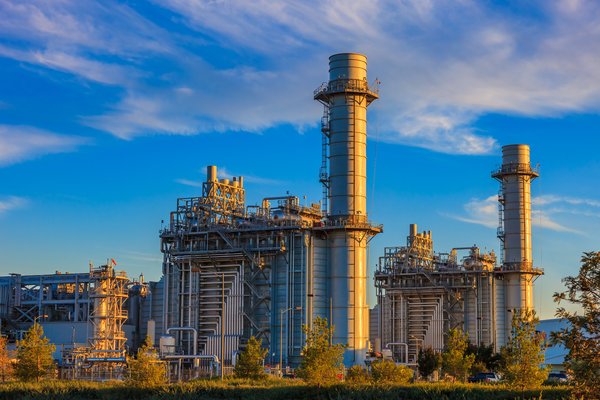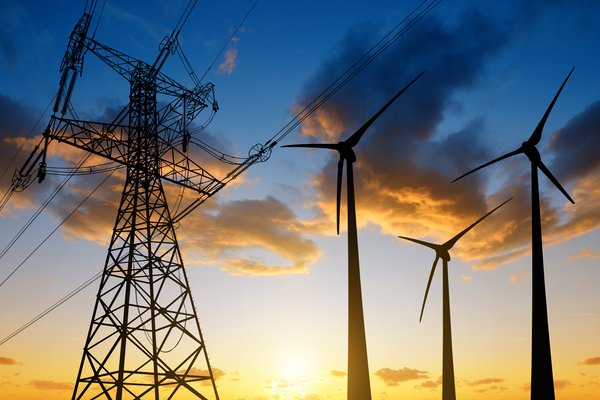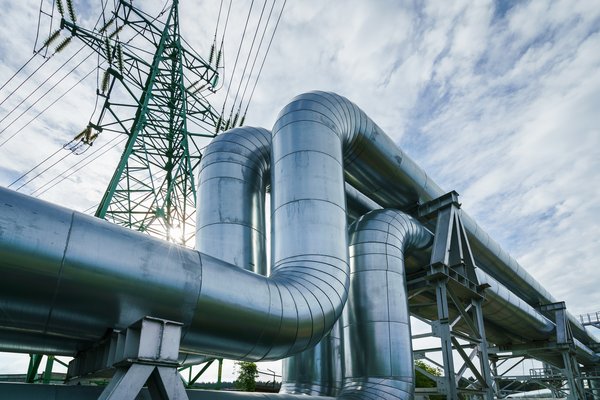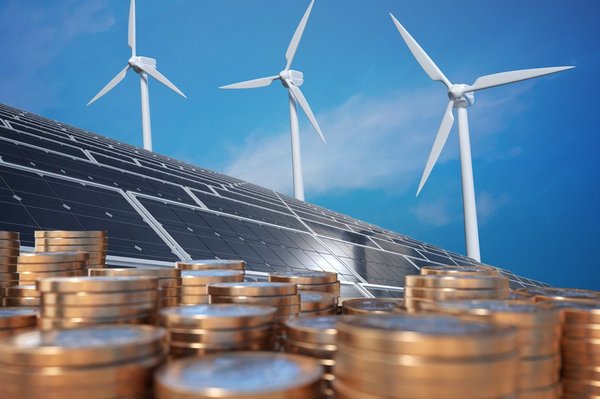Hydrogen is an energy source that emits no greenhouse gases when burned. The only waste product is water vapor, making it a cleaner energy source than fossil fuels such as natural gas, oil, and coal.
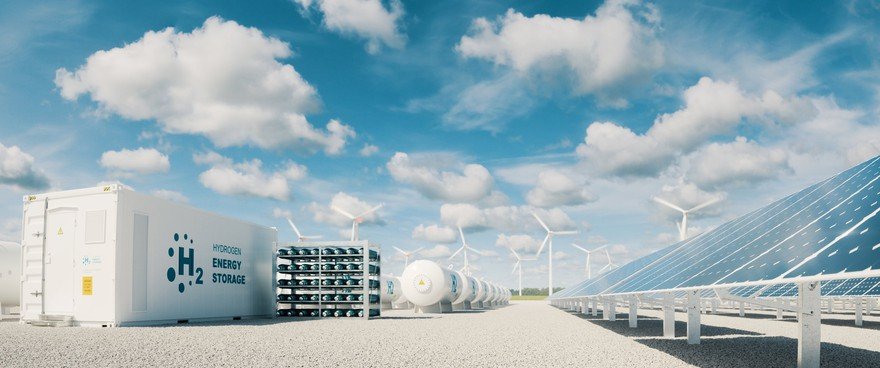
The drawback to hydrogen as a fuel source is that it’s rarely found in an easily extractable form, as natural gas is. And although hydrogen can be produced from a variety of sources, most methods emit greenhouse gases. On top of that, it’s not yet made at the scale needed to be economically competitive with fossil fuels.
However, that could change in the coming years. Several companies are working hard to tap into the enormous promise of this potentially emission-free fuel.
Investing in hydrogen
What to know about investing in hydrogen
There are several ways to produce hydrogen. Some methods result in the production of carbon dioxide as a byproduct. For example, the industry describes hydrogen obtained from burning natural gas as "blue hydrogen." Using this form of hydrogen requires carbon capture and storage to keep the associated carbon dioxide underground to eliminate greenhouse gas emissions.
Another method uses renewable energy to power an electrolyzer that splits hydrogen from water molecules. This process produces "green hydrogen," which results in no carbon emissions. Green and blue are two of the many colors used to classify hydrogen by its production method and emissions profile.
Hydrogen fuel cells work much like batteries by generating electricity from an electrochemical reaction. Instead of being recharged like a traditional battery, hydrogen fuel cells are refueled with more hydrogen. We could use hydrogen fuel cells to motorize vehicles (cars, trains, buses, maritime vessels, and trucks) and as a stationary power source.
Carbon Credits
Some advocates contend that hydrogen might eventually replace natural gas in the pipeline system with some modifications. It could then be used in power plants to generate electricity and as a fuel source for our homes. Because of its potential, some forecasts peg the future value of the clean hydrogen market at as much as $10 trillion.
Although clean hydrogen holds great promise as a potential emissions-free fuel source, it's costly to produce. It costs about $1.50 per kilogram to produce hydrogen from natural gas and $5 per kilogram to produce clean hydrogen. The U.S. Department of Energy wants to get the cost of clean hydrogen down to $1.00 per kilogram over the next decade to make it a more competitive fuel source.
Best hydrogen stocks to buy
Best hydrogen stocks to buy in 2024
Given the potential of clean hydrogen, a growing number of companies are investing in the sector. Many energy and industrial companies are in the early stages of exploring the possibility of hydrogen energy.
However, a handful of companies are already starting to emerge as early leaders in the sector. Here are five leading hydrogen companies to keep an eye on as the industry matures:
| Hydrogen Stock | Ticker Symbol | Market Cap |
|---|---|---|
| Air Products | NYSE:APD | $58.8 billion |
| BP | NYSE:BP | $100.76 billion |
| Plug Power | NASDAQ:PLUG | $2.37 billion |
| Bloom Energy | NYSE:BE | $2.96 billion |
| Linde | NYSE:LIN | $196 billion |
Here's a closer look at some of the best hydrogen stocks to buy as the sector starts taking center stage in the coming years:
1. Air Products
1. Air Products
Air Products is one of the world leaders in supplying industrial gases. It's a global leader in liquefied natural gas (LNG) processing technology and equipment. It's also one of the world's largest suppliers of merchant hydrogen and a leader in hydrogen fuel infrastructure. It has more than 100 hydrogen plants with the capacity to produce 7 million kilograms of the fuel each day.
Air Products aspires to be a leader in providing solutions to the world's energy and environmental challenges through gasification, carbon capture, and clean hydrogen. It has several major hydrogen projects underway that it expects to complete in the coming years. Its $7 billion carbon-free hydrogen joint venture in Saudi Arabia is the biggest. The project would use renewable energy to produce 650 tons per day when completed in 2025. The project and others under development position Air Products to remain a leading global hydrogen energy company.
2. BP
2. BP
BP is a global oil and gas producer with grand lower-carbon energy ambitions. It set a goal to be a net-zero company by 2050 or earlier.
Hydrogen is a crucial aspect of its strategy. BP intends to capture a 10% share of the hydrogen market in its core operating areas. That's driving it to advance hydrogen projects across the U.K., Europe, the U.S., and Australia.
For example, in the U.K., it's developing plans to build that country's largest blue hydrogen production plant (H2Tesside). It's also developing HyGreen Tesside, a large-scale green hydrogen production facility. The projects could deliver 15% of the U.K.'s 2030 target for low-carbon hydrogen production.
3. Plug Power
3. Plug Power
Plug Power is a pioneer in the hydrogen fuel cell industry. It created the first commercially viable market for hydrogen fuel cell technology. It has deployed an industry-leading 60,000 fuel cell systems for the e-mobility market (using electric powertrain technologies to power vehicles and fleets). It's one of the world's largest hydrogen buyers and operates a leading hydrogen refueling network in North America with more than 180 fueling stations.
Plug Power is building an end-to-end green hydrogen network to produce, store, and deliver the fuel across North America and Europe. It expects to produce 2,000 tons of green hydrogen per day by 2030. The company's strategy of building the world's first green hydrogen ecosystem positions Plug Power as a potential category leader in this massive market opportunity.
4. Bloom Energy
4. Bloom Energy
Bloom Energy's mission is to make clean, reliable, and affordable energy. The company has developed the Bloom Energy Server, an electric power generation platform. It also created the Bloom Electrolyzer, using the same solid oxide technology as its Bloom Energy Server. The product can produce clean hydrogen 15% to 45% more efficiently than others on the market.
Bloom Energy believes the Bloom Electrolyzer is a major leap forward for hydrogen. It hopes the technology will enable heavy industries such as steel, chemicals, cement, and glass manufacturing to decarbonize. Bloom Energy can pair its Bloom Electrolyzer with solar energy and wind energy to generate green hydrogen, which it can store and eventually turn back into electricity for future use.
5. Linde
5. Linde
Linde has developed several technologies to efficiently compress and safely refuel hydrogen. It also offers technologies to lower the carbon emissions of hydrogen through carbon capture and storage.
In 2023, the company agreed to invest $1.8 billion to supply clean energy to a large-scale blue ammonia plant in Texas. Linde plans to build the carbon capture infrastructure needed to sequester more than 1.7 million metric tons of carbon dioxide per year, offsetting the emissions of the hydrogen supplied to the plant. It signed a deal with oil giant ExxonMobil (XOM -0.05%) to transport and permanently store the captured carbon dioxide. The company expects the project to start in 2025.
A promising alternative
Hydrogen is one of the most promising alternative fuels
Hydrogen energy has enormous potential. The emissions-free fuel could help decarbonize heavy industry, replace natural gas, and store renewable energy, paving the way for a truly net-zero world. Therefore, it represents a multitrillion-dollar market opportunity.
However, hydrogen is still developing as a commercially viable fuel source. The industry needs to scale up and reduce costs to become competitive with fossil fuels and other emerging technologies like battery storage. Investors might want to watch the sector for a while as they gauge which companies have the best chances of emerging as long-term winners.
FAQ
Hydrogen stock FAQ
Are hydrogen stocks worth buying?
Hydrogen stocks can be worth buying. The global hydrogen industry has tremendous growth potential. The fuel could one day replace natural gas for residential, commercial, and industrial usage. It could also be an important low-carbon fuel for the transportation industry. If hydrogen lives up to its promise, companies focused on the sector could see significant revenue and earnings growth, giving their stocks the fuel to skyrocket in the future.
Who is the largest hydrogen producer in the United States?
Linde was the largest liquid hydrogen producer in the U.S. as of 2022. The company was expanding its capacity to meet the growing demand for hydrogen, especially emissions-free green hydrogen.
What hydrogen stock is Amazon investing in?
In 2022, Amazon signed a green hydrogen supply deal with Plug Power. The agreement will provide the e-commerce giant with emissions-free fuel to power some of its fleet starting in 2025. As part of the deal, Amazon received warrants to buy as many as 16 million shares in Plug Power.
Which hydrogen ETF is best?
As of mid-2023, three exchange-traded funds (ETFs) focus on hydrogen stocks. These hydrogen ETFs are Global X Hydrogen ETF (NYSEMKT: HYDR), Defiance Next Gen H2 ETF (NYSEMKT: HDRO), and Direxion Hydrogen ETF (NYSEMKT: HJEN). These pure-play hydrogen ETFs are very small (each has less than $40 million of assets under management). They have reasonable ETF expense ratios (between 0.3% and 0.5%) and similar holdings (about 30 hydrogen stocks).










